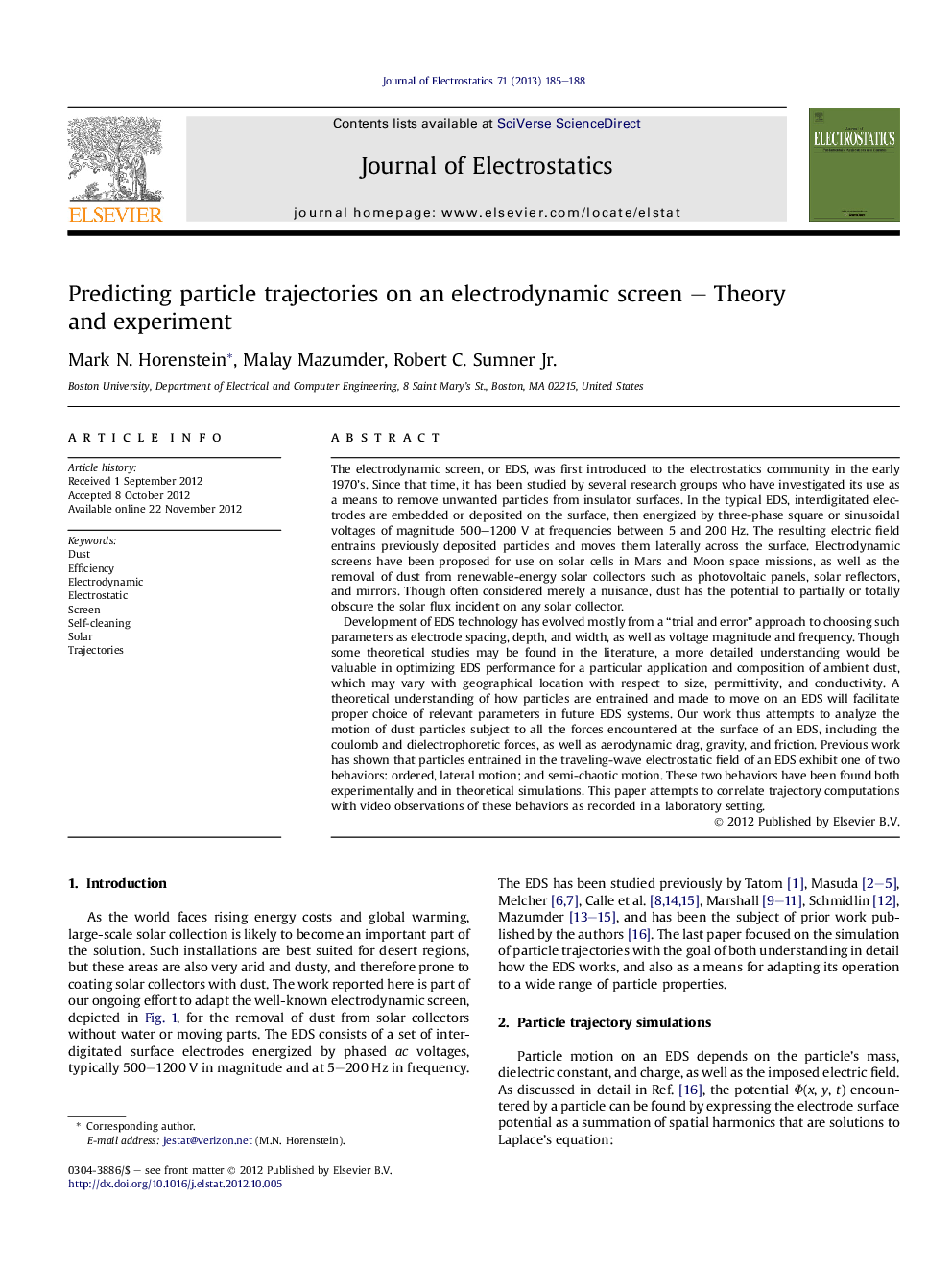| کد مقاله | کد نشریه | سال انتشار | مقاله انگلیسی | نسخه تمام متن |
|---|---|---|---|---|
| 726729 | 892651 | 2013 | 4 صفحه PDF | دانلود رایگان |

The electrodynamic screen, or EDS, was first introduced to the electrostatics community in the early 1970's. Since that time, it has been studied by several research groups who have investigated its use as a means to remove unwanted particles from insulator surfaces. In the typical EDS, interdigitated electrodes are embedded or deposited on the surface, then energized by three-phase square or sinusoidal voltages of magnitude 500–1200 V at frequencies between 5 and 200 Hz. The resulting electric field entrains previously deposited particles and moves them laterally across the surface. Electrodynamic screens have been proposed for use on solar cells in Mars and Moon space missions, as well as the removal of dust from renewable-energy solar collectors such as photovoltaic panels, solar reflectors, and mirrors. Though often considered merely a nuisance, dust has the potential to partially or totally obscure the solar flux incident on any solar collector.Development of EDS technology has evolved mostly from a “trial and error” approach to choosing such parameters as electrode spacing, depth, and width, as well as voltage magnitude and frequency. Though some theoretical studies may be found in the literature, a more detailed understanding would be valuable in optimizing EDS performance for a particular application and composition of ambient dust, which may vary with geographical location with respect to size, permittivity, and conductivity. A theoretical understanding of how particles are entrained and made to move on an EDS will facilitate proper choice of relevant parameters in future EDS systems. Our work thus attempts to analyze the motion of dust particles subject to all the forces encountered at the surface of an EDS, including the coulomb and dielectrophoretic forces, as well as aerodynamic drag, gravity, and friction. Previous work has shown that particles entrained in the traveling-wave electrostatic field of an EDS exhibit one of two behaviors: ordered, lateral motion; and semi-chaotic motion. These two behaviors have been found both experimentally and in theoretical simulations. This paper attempts to correlate trajectory computations with video observations of these behaviors as recorded in a laboratory setting.
Journal: Journal of Electrostatics - Volume 71, Issue 3, June 2013, Pages 185–188